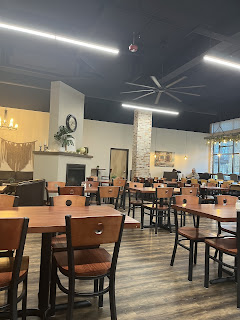Cortado & Hindemith
To kick off this blog, I had to return to the first cafe I checked out upon moving to Iowa City: Cortado Mediterranean Cafe. It is only a short walk from the Voxman Music Building, allowing for the occasional change of scenery between classes and rehearsals. Alas, my dreams of the ultimate triple pun were crushed when I discovered their namesake was not offered on their main menu!
Fortunately I was able to still enjoy a warm cappuccino with the company of a classmate (who is also running a blog! You can check out Kevin's posts here). The space was bright and filled with small groups enjoying conversation. This may not be the best space to study or intensely listen to some brass ensemble repertoire, but for an espresso drink prepared to just the right temperature it's still worth stopping by.
I also wanted to start my repertoire features with an oldie but a goodie: Paul Hindemith's Sonata for Four Horns. I was first introduced to this work second semester freshman year of my undergraduate degree. Another fun fact: one of the other horns from that quartet, Matt, now runs his own coffee company. Lekko has insanely good quality beans, and if you haven't already checked them out I highly suggest you go and support a fellow musician.
Hindemith (1895-1963) was a German composer, music theorist, educator, and conductor. His musical output is extremely varied, from orchestra to band, chamber music to film scores, and everything in between. In the brass community, he is often best remembered for his contribution to the solo repertoire. His sonatas for horn, trumpet, trombone, and tuba remain pillars in our curriculum to this day. His Sonata for Four Horns is one of the iconic pieces in the horn quartet library, and is commonly performed in recital settings. Composed in 1952, the Sonata for Four Horns is made up of three movements and in the span of 15 minutes highlights both the virtuosity & characteristic sound of the horn. The piece is very contrapuntal and neotonal (meaning that the piece has a tonal center, but the composer incorporates all 12 chromatic pitches throughout the work). Below you can videos of one of my favorite recordings of this work, featuring David Kreihbel, Gail Williams, Larry Strieby, and Thomas Bacon, as well as some of my favorite elements from each movement.
The first movement, Fugato, is the shortest of the piece. It features imitation between the four voices, just as one would expect from its title. The primary motif of the movement begins off of the beat, opening the entire work with an empty downbeat. The movement ends with an open fifth rather than a complete triad which prevents the listener from fully experiencing closure.






Comments
Post a Comment